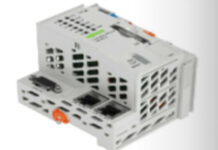In the rapidly evolving digital landscape, data centers and servers serve as the backbone of virtually every digital application. Whether its powering cloud computing, supporting the massive growth of Artificial Intelligence (AI), or enabling the Internet of Things (IoT), data centers are central to modern technological infrastructure. As the world demands more from digital services, data centers must adapt to handle exponentially increasing data volumes, processing needs, and sustainability challenges. The future of this vital industry hinges on innovations that address efficiency, sustainability, and scalability, with emerging technologies like AI, edge computing, and liquid cooling leading the way.
Advancements in Server Technology and Data Center Design
Recent advancements in server technology and data center design are significantly improving the efficiency and sustainability of the data world. According to the “Uptime Institute Global Data Center Survey,” 36% of respondents believe innovations like Direct Liquid Cooling will play a critical role in driving the next wave of improvements in data center efficiency.
Liquid cooling, particularly direct-to-chip and immersion cooling, has become a major innovation in data center cooling. Unlike traditional air cooling systems, liquid cooling offers 3-10x better heat dissipation, which enables higher performance in data centers while reducing energy consumption. This allows servers with higher thermal design power (TDP) to support demanding AI, machine learning (ML), and high-performance computing (HPC) workloads. Hemant Agarwal, CTO of Netweb Technologies, explains, “Liquid cooling systems not only help in maintaining optimal server performance but also contribute to a more sustainable environment by reducing power usage effectiveness (PUE) and operational expenses.”
Another notable advancement is the shift toward denser computing. Multi-node servers, GPU-dense systems, and blade servers are maximizing compute power in minimal space, reducing the need for large physical footprints in data centers. These innovations reduce construction costs and land requirements while improving computational efficiency. “Denser computing has transformed how we approach data center design. By incorporating GPUs, CPUs, and FPGAs in compact configurations, we can handle faster workloads with lower latency while optimizing resource utilization,” says Agarwal.
Together, these technologies are reshaping the infrastructure of modern data centers. They are driving the convergence of cloud, AI, big data, and edge computing, enabling enterprises to deploy faster, more efficient, and cost-effective infrastructure solutions.
AI and ML: Shaping the Evolution of Data Centers
AI and ML are not just revolutionizing the services data centers provide but also the way data centers operate. The International Energy Association (IEA) estimates that by 2026, data centers will account for 2.6% of global power demand, up from 1.7% in 2022. This surge is attributed to the increasing demands of AI and ML workloads, which require massive amounts of computational power and energy.
As AI applications become mainstream across industries, organizations are seeking to process and analyze vast amounts of data. This shift has led to a rapid adoption of GPUs, which are essential for AI training and inference tasks. The need for higher computing density, however, has intensified the challenges related to energy consumption and heat management within data centers. Hemant Agarwal notes, “The rise of AI and ML has necessitated the development of new infrastructure to handle the increased hardware density and power demands. This is where advanced cooling systems, such as liquid cooling, become critical to ensuring performance without excessive energy consumption.”
Moreover, AI is influencing data storage as different AI workloads demand specialized storage solutions. For example, high-speed NVMe storage is ideal for training datasets, while long-term storage is required for large AI models. AI’s growing influence on data centers has prompted organizations to rethink their infrastructure strategies. To efficiently support AI workloads, data centers are now adopting hybrid infrastructure models with workload-optimized server nodes and GPU-based clusters, ensuring effective resource allocation and better energy efficiency.
“Modern data centers are evolving to meet the needs of AI by incorporating intelligent workload orchestration systems,” explains Agarwal. “These systems not only optimize energy use but also ensure that computing power is distributed where it’s needed most, thus reducing energy waste.”
Challenges in Improving Energy Efficiency and Reducing Carbon Footprints
Despite significant advancements in technology, data centers face multiple challenges in improving energy efficiency and reducing their carbon footprint. With AI workloads growing exponentially, power consumption is set to increase dramatically. The challenge lies in managing this power demand without significantly escalating the environmental impact of data centers.
Cooling remains one of the most energy-intensive operations in a data center. Traditional air-cooled systems, which consume nearly 1 watt of cooling for every watt of energy used by the servers, are far from energy-efficient. To counteract this, companies are exploring more sustainable cooling solutions. As mentioned by Darshil Shah, Founder of TreadBinary, “Liquid and immersion cooling have emerged as highly energy-efficient solutions for server heat management. They provide a sustainable alternative to traditional air cooling methods.”
While liquid cooling has proven effective, it also requires significant investment in infrastructure and technology upgrades. Furthermore, energy consumption can be exacerbated by the increasing demands of AI and big data applications, which require vast computing power. For instance, training AI models consumes significant amounts of energy, adding to the carbon footprint of data centers.
To mitigate these challenges, companies are adopting a strategy called ‘workload-based segregation.’ This strategy involves segregating AI training and inference workloads to optimize energy use and reduce the overall power consumption. By allocating specific resources to different workloads, data centers can ensure energy is used more efficiently, resulting in lower power usage and operational costs.
“We are seeing an increasing shift toward smarter resource allocation to balance power consumption and cooling demands. Through AI and machine learning, data centers can predict power needs and optimize performance,” says Shah.
Additionally, embodied carbon from constructing data centers adds to their environmental impact. As the demand for data centers grows, adopting sustainable building techniques, using eco-friendly materials, and reducing the carbon intensity of power sources will become essential.
Edge Computing and Hyperscale Data Centers: Paving the Way for the Future
The future of data centers is not solely reliant on large-scale facilities. Emerging trends like edge computing and hyperscale data centers are reshaping how data is processed and stored, and they are playing a critical role in meeting the growing demands of the digital world.
Edge computing, which processes data closer to the source of generation, is crucial for reducing latency and enabling real-time analytics. By processing data locally, edge computing reduces the need for long-distance data transmission, which can lead to congestion and increased bandwidth usage. This trend is especially important for AI-driven applications such as autonomous vehicles, IoT devices, and smart cities, where split-second decision-making is essential.
According to Darshil Shah, “Edge computing minimizes the need for central servers, cutting down on latency and bandwidth usage. This is vital for AI-powered devices like autonomous vehicles, where every millisecond counts.”
On the other hand, hyperscale data centers are designed to handle massive amounts of data. They are built for scalability, efficiency, and reliability, providing the infrastructure necessary to support cloud computing, AI workloads, and big data analytics. These data centers offer immense computing power and storage capacity, enabling organizations to handle ever-growing data volumes.
The synergy between edge computing and hyperscale data centers is setting the stage for a hybrid approach to data processing. As Shah explains, “With edge computing handling real-time data processing and hyperscale data centers taking care of large-scale computations, the data world becomes much more agile and responsive.”
Together, edge computing and hyperscale data centers form the foundation for a distributed digital infrastructure that can support the AI and IoT-driven future.
Emerging Technologies Shaping the Future of Data Centers
Several emerging technologies are set to have a profound impact on data centers in the near future. Among these, quantum computing and photonic computing stand out. Quantum computing, still in its experimental stages, promises to revolutionize computing power by solving complex problems that are currently beyond the reach of traditional computers. Photonic computing, which uses light instead of electricity to transfer data, could drastically improve data transfer speeds and energy efficiency.
Cryogenic cooling, which operates data centers at ultra-low temperatures, is another technology that could significantly reduce energy consumption. By cooling servers at much lower temperatures, cryogenic systems offer a much more energy-efficient approach to managing heat.
Neuromorphic computing, inspired by the structure of the human brain, is another breakthrough in AI computing. This technology is designed to optimize energy consumption while improving the processing power of AI-driven applications.
“We’re entering an era where technologies like neuromorphic computing and quantum computing are likely to disrupt traditional data center designs,” says Shah. “These innovations will lead to faster, more energy-efficient systems capable of handling complex workloads in the most sustainable ways possible.”
In addition, next-generation networking technologies such as 6G and advanced fiber optics will enable faster and more reliable data transfer, further enhancing the capabilities of data centers. As the world moves toward faster, more interconnected systems, these innovations will play a pivotal role in shaping the data world of tomorrow.
Conclusion
The future of data centers, servers, and the data world is bright with innovation, but challenges remain. As AI, ML, and big data continue to reshape industries, data centers must evolve to meet the demands for greater speed, scalability, and sustainability. Through the integration of cutting-edge technologies like liquid cooling, AI-driven optimization, edge computing, and hyperscale data centers, the industry is poised to tackle the challenges of energy efficiency, cost reduction, and environmental impact.
Emerging technologies like quantum computing, photonic computing, and neuromorphic systems will further accelerate the transformation, enabling data centers to support the growing demands of the digital world. With sustainability at the forefront, data centers will continue to play a pivotal role in shaping the future of technology and business.
As we move forward, it is clear that the data world is on the brink of a transformative shift, one where smarter, more efficient, and environmentally friendly data centers are the foundation of a more connected and data-driven society.

















